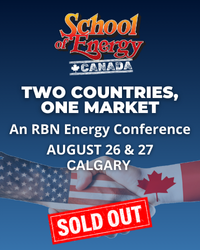As Canada’s natural gas exports to the Eastern U.S. have been pushed out by growing Marcellus/Utica gas supply, they’ve been flooding the U.S. West Coast. TransCanada is planning expansions of its Alberta system to send more gas across the western border, setting the stage for a showdown with Rockies gas supply. At the same time, the rise of renewable energy in California and the Pacific Northwest poses a constraint for gas demand growth in the region. Today, we look at recent shifts in border flows to the West Coast and prospects for future growth.
This blog continues our series on Canada’s gas exports to the U.S., which have been under pressure from competing gas supply growth in the U.S. We began in Part 1 by looking at the macro fundamentals affecting the Canadian gas supply-demand balance, including growing gas production from the Montney and Duvernay shale plays in Alberta and British Columbia. While Canada’s gas demand is also rising — from oil sands production and gas-fired power generation — exports remain a necessary demand source for Canadian producers. However, the problem is that the U.S. will need less and less of that Canadian gas.
As we demonstrated in Part 2 — using pipeline flow data from our friends at PointLogic Energy — the U.S. Northeast region, which historically was a robust market for Canadian gas, began pushing back on gas imports from Canada starting in 2009, in the early days of the Marcellus Shale. By late 2012, the Northeast exported the first Marcellus gas volumes to Canada, changing the equation of net flows across the border. And, as of last year, for the first time, the Northeast flipped to being a net exporter to Canada on an annual average basis.
Despite being pushed out of the Northeast, however, overall net Canadian gas flows to the U.S. have been relatively stable in recent years, which implies that producers have been able to offset the Northeast declines by shifting exports to other U.S. regions.
In Part 3, we began an examination of border flows in one of those regions — the Western U.S. — where there are four routes for Canada to send gas over, as shown in the map in Figure 1 below: (1) on Enbridge/Pembina’s Alliance Pipeline (blue line), which crosses the border near Sherwood, ND (blue dot); (2) from the TransCanada (TC) Foothills’ (pink line) eastern leg to TC’s Northern Border Pipeline (NBPL, light green line) via the Port of Morgan, MT, border crossing (POM, light green dot); (3) from TC Foothills’ western leg to TC’s Gas Transmission Northwest (GTN, red line) via the Kingsgate (red dot) point near the British Columbia-Idaho border; and, (4) from Enbridge’s Westcoast Energy to Williams’s Northwest Pipeline (NWPL, orange line) via the Sumas, WA, border point (orange dot).
Join Backstage Pass to Read Full Article






